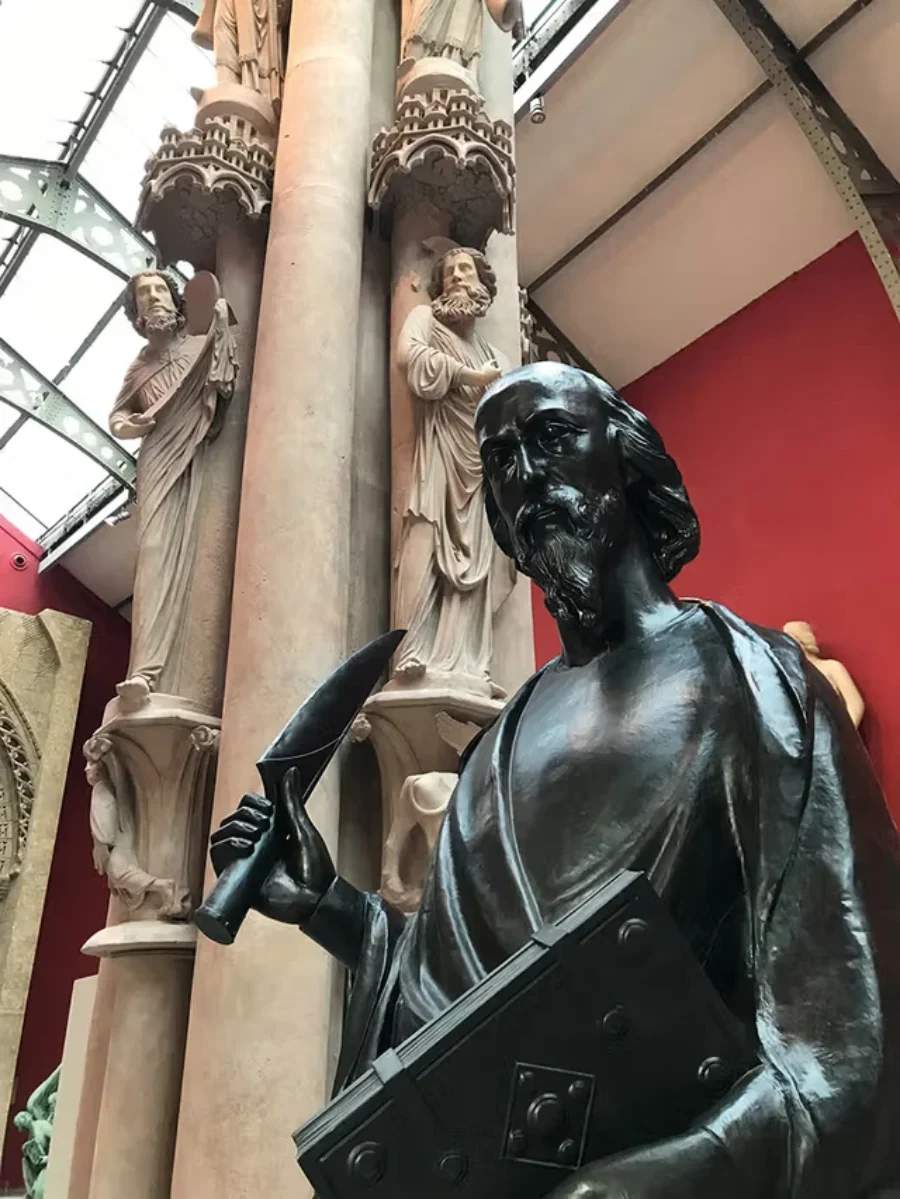The devastating fire at Notre-Dame Cathedral in April 2019 resulted in the loss of significant parts of the iconic structure, including its spire and much of the wooden roof. However, a fortunate turn of events preserved one of its most remarkable features, the statues adorning the spire. These copper sculptures, representing the Twelve Apostles and the four New Testament Evangelists, were removed just days before the fire for essential cleaning and restoration. Their timely removal not only saved them from potential destruction but also ensured their continued legacy as integral components of the cathedral’s architecture.
Historical Significance of the Spire Statues
Designed in 1857 by the renowned architect Eugène Viollet-le-Duc during his extensive restoration of Notre-Dame, the spire stood as a testament to French Gothic architecture. The 96-meter spire was adorned with statues of the Twelve Apostles and the four Evangelists, each positioned thoughtfully to enhance the spire’s grandeur. Notably, the apostle Thomas, believed to be modeled after Viollet-le-Duc himself, gazes upward toward the spire, symbolizing the architect’s personal connection to the masterpiece. These statues, crafted from 1mm-thick copper sheets affixed to steel armatures, were designed to withstand the test of time, showcasing both artistic excellence and structural ingenuity.
Restoration Efforts and Challenges
The conservation firm Socra undertook the meticulous task of restoring these statues. Their efforts included repairing structural damage caused by galvanic corrosion, a result of the interaction between copper and steel, and addressing deformities in the copper. During the restoration process, several intriguing discoveries were made, such as bullet holes in the figure of Saint Mark, likely dating back to World War II. These findings not only highlight the statues’ historical journey but also underscore the layers of history embedded within Notre-Dame’s walls.
Return to Original Aesthetics
One of the most visually striking aspects of the restoration is the decision to return the statues to their original appearance. Over the years, oxidation had turned the copper statues a greenish hue, a common effect of weathering. To restore their original luster, Socra’s team cleaned the sculptures, applied a patina using potassium sulfide, and coated them with a layer of colorless wax. This treatment is expected to preserve their renewed appearance for at least 15 years, offering visitors a glimpse into the cathedral’s 19th-century splendor. The restored statues are set to be reinstalled on the spire in the first half of 2025, marking a significant milestone in Notre-Dame’s restoration journey.
Symbolism and Future of Notre-Dame
The preservation and restoration of these statues have played a pivotal role in shaping the direction of Notre-Dame’s overall restoration. Their survival influenced the decision to reconstruct Viollet-le-Duc’s 19th-century spire instead of attempt to modernize it, maintaining historical continuity rather than opting for a contemporary design. This choice reflects the broader commitment to preserving the cathedral’s rich heritage while honoring the artistic visions that have defined its iconic status. As the restoration and renovation progresses, the reinstallation of the spire and its statues will not only restore the cathedral’s architectural integrity but also serve as a symbol of resilience and renewal for both Paris and the global community. This endeavor ensures that future generations can continue to admire and draw inspiration from this masterpiece of Gothic architecture.









